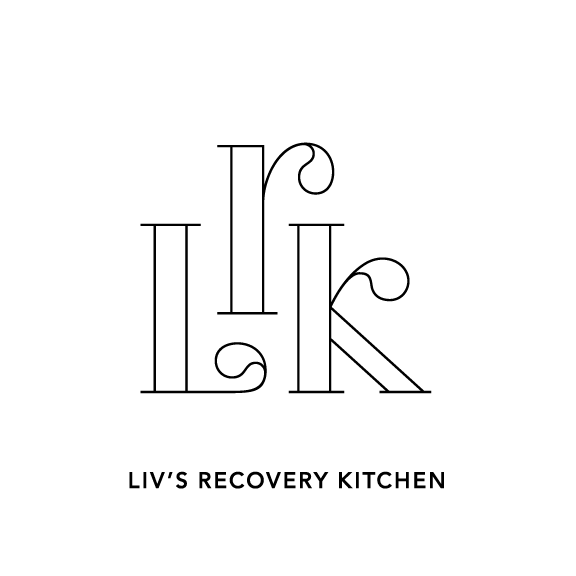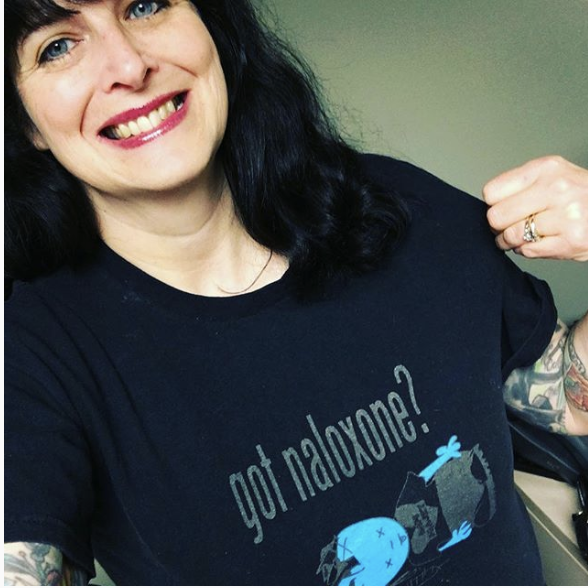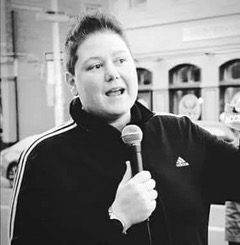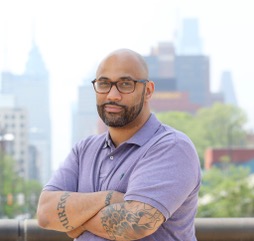Four Advocates on How Harm Reduction Can Change the Trajectory of the Addiction Crisis
There is overwhelming evidence that harm reduction keeps people alive and can bring them into recovery, yet it's still met with opposition. We ask four harm reduction workers what inspires them and what we can do to help.
Harm reduction is seen by many in the recovery community as a crutch when it should be seen as a lifeline.
Harm reduction has been a contentious topic for a while: staunch 12-step proponents who insist that abstinence is the only way to achieve recovery are met with resistance from a growing number of harm reduction activists who consider the reality of drug use more holistically while advocating for individual choice and safety. Many of us have deep-seated beliefs and strong feelings about recovery, but now more than ever we need to analyze and hopefully remove our biases, accept the overwhelming data in favor of harm reduction, and face the failed policies that have led to a national crisis. Every day 130 people die from opioid overdose in the U.S., and misuse of prescription opioids costs us an estimated 78.5 billion dollars each year.
Abstinence alone isn’t working. If it were, we wouldn’t have an epidemic on our hands. Perhaps this realization is why we are seeing an increase in harm reduction measures—increased naloxone access, fentanyl testing strips, Good Samaritan laws, and needle exchange programs. And they work: many individuals enter recovery through various harm reduction programs. But regardless of whether people get treatment or not, harm reduction measures prevent disease and save lives.
What Is Harm Reduction?
Harm reduction is frequently misunderstood. Often people think it means the use of medication-assisted treatments (pharmacology), or moderating drug use instead of eliminating it entirely. But these are narrow definitions. Harm reduction is not a particular pathway of recovery; it is a means of reducing the harm associated with drug use.
According to the Harm Reduction Coalition, “Harm reduction is a set of practical strategies and ideas aimed at reducing negative consequences associated with drug use. Harm reduction is also a movement for social justice built on a belief in, and respect for, the rights of people who use drugs.”
The philosophy of harm reduction accepts that drug use is complex and multifaceted, and that it involves a range of behaviors from frequent use to total abstinence. It acknowledges that some ways of using drugs are clearly safer than others. Harm reduction includes strategies such as safer use, managed use, needle exchanges, supervised injection sites, treatment instead of jail, and abstinence. It advocates for meeting the individual where they are and addressing their reasons for using and the conditions surrounding their drug use. Successful implementation of harm reduction should lead to well-being for individuals and communities, but not necessarily cessation of all drug use.
Tracey Helton Mitchell, Devin Reaves, Brooke Feldman, and Chad Sabora advocate for the acceptance and practice of harm reduction. We asked what motivated them to pursue their activism and how we can all be more mindful of harm reduction principles.
Tracey Helton Mitchell
Tracey Helton Mitchell came into the public eye when she was featured in HBO’s documentary Black Tar Heroin, which documented her life on the streets on San Francisco. After she found recovery, she rebuilt her life and went back to school for a bachelor’s degree in business administration and a master’s in public administration. She has dedicated her life to advocating for the individual needs of people with addiction. She documents her journey in her book The Big Fix: Hope After Heroin.
In 2016 Tracey told NPR that "We need to have a variety of different kinds of treatment interventions that address people's needs.” In response to the argument that harm reduction measures such as needle exchange enable drug use, she said: “We're not encouraging people to do anything, we're taking a look at their public health behaviors and then addressing what the particular needs are, so look at the cost of one syringe versus the cost of someone getting hepatitis C and having to take care of them for a lifetime.”
What motivated you to work in harm reduction?
I started in harm reduction in response to the overdose crisis that was happening in San Francisco and the Pacific Northwest in the late 90s. I knew many people who had died, including Jennifer H., a person I loved very much.
How can we include more of the principles of harm reduction when dealing with people in recovery, and those actively taking drugs?
Harm reduction is seen by many in the recovery community as a crutch when it should be seen as a lifeline. Harm reduction should be included as part of a continuum of care with a wide variety of options based around what is best for the person. Too much focus has been made on “abstinence only” as the standard for recovery. We need to broaden our scope.
Devin Reaves
Devin Reaves, MSW, is a community organizer and grassroots advocacy leader who is in long-term recovery. He is also the co-founder and executive director of the Pennsylvania Harm Reduction Coalition (PAHRC), serves on the Camden County Addiction Awareness Task Force, and sits on the board of directors for the Association of Recovery High Schools. He has worked on the expansion of access to naloxone, the implementation of Good Samaritan policies, and the development of youth-oriented systems, and he is leading conversations to bring about public health policy changes in the area of substance use disorders.
PAHRC’s mission is to promote the health, dignity, and human rights of individuals who use drugs and the communities affected by drug use.
What motivated you to work in harm reduction?
As someone in recovery who lost a lot of friends to substance use disorder, when I learned about Narcan, I wanted it to be more available because I was sick of my friends dying. Seeing that harm reduction wasn’t utilized made me want to fight to see more of it: syringe services programs or more innovative programs.
How can we include more of the principles of harm reduction when dealing with people in recovery, and those actively taking drugs?
We can provide Fentanyl testing strips, Narcan, and sterile needles to use. For those seeking recovery, we should also provide Narcan because they are still at risk. What people don’t know about harm reduction is that individuals in programs of harm reduction are five times more likely to enter treatment—it is a pathway of recovery.
Brooke Feldman
Brooke Feldman, MSW, is a social justice activist who identifies as a member of the LGBTQ+ community and a person in long-term recovery from substance use disorder. She has spent the past decade advocating for wellness and long-term recovery being accessible to all.
What motivated you to work in harm reduction?
Well, I think I was pretty primed to embrace harm reduction principles over 10 years ago when I was taught what are called “recovery-oriented” care principles. Back in 2008, and only a few years into my own recovery journey, I was working for an organization called PRO-ACT at Philly’s first Recovery Community Center. We had a sign on the wall that greeted people with, “How can I help you with YOUR recovery?” and we were educated and trained in practices such as meeting people where they’re at, supporting people in working toward their own goals rather than our goals for them, recognizing that abstinence is not the goal for everybody, and embracing diversity in recovery experiences and mosaics of pathways. My experience with what we call recovery-oriented practice over the past decade set the stage for harm reduction principles and practices to fit perfectly. Unfortunately, while I have found my own professional experience, education, and training in recovery-oriented care to fit neatly with harm reduction, I still see many gaps between the harm reduction and recovery movements. A large motivator for me currently is the strong desire to bridge those gaps, to highlight shared goals and values, and to be part of unifying the two movements wherever possible. I believe people die in the cracks of the divide, and I hope to serve as part of the glue that seals the cracks.
How can we include more of the principles of harm reduction when dealing with people in recovery, and those actively taking drugs?
I think that if we center the human rights of choice, self-determination and autonomy when it comes to directing the course of one’s own life, we become more inclusive of harm reduction principles across the board. One concrete area for centering these principles is that of the use—or declined use—of medications to treat opioid use disorders. People have a right to utilize evidence-based medications to aid in their recovery, and people also have a right to decline the use of medication as part of their recovery. Nobody should face discrimination or refusal of resources, supports, and services based on this choice of what to put in their bodies. Also, one of the things I love about the harm reduction movement is the social justice focus. In my experience, the harm reduction movement centers the roles that oppression and marginalization play when it comes to how our systems, and society at large, respond differently to drug use depending on the skin color or socioeconomic status of the drug user. I think that centering social justice would put us all in the right position when it comes to both people currently using drugs and people in recovery, however that recovery is self-defined.
Chad Sabora
Chad Sabora is the co-founder and executive director of the Missouri Network for Opiate Reform and Recovery (Mo Network), an organization that offers services to those struggling with substance use disorder and their loved ones. He has been the focus of several episodes of the show Drug Wars on Fusion and was part of an Emmy award-winning episode of NBC News with Brian Williams. Sabora has been an expert correspondent on CNN and MSNBC. He is also president and co-founder of the nonprofit Rebel Recovery Florida, and he is on the board of directors of the Discovery Institute for Addictive Disorders in Marlboro, New Jersey. Sabora is also known for filming himself while touching fentanyl, thus debunking the myth that you can overdose through skin contact with the illicit substance.
Uniquely experienced as a former prosecutor and a person in long-term recovery, Sabora left legal practice in favor of pursuing drug policy reform and advocacy. He founded Mo Network in 2013, where he heads their work on legislative policy reform. Sabora and Mo Network focus on expanding services based on evidence-based solutions, and they lobby for more effective drug policy locally in Missouri and also at the federal level.
He has helped write, advocate for, and pass several pieces of legislation in Missouri, namely first responder access to Narcan, third-party and over-the-counter access to Narcan, 911 Good Samaritan immunity, and access to medication-assisted treatment in various environments such as addiction treatment, mental health facilities, family court, and for certain frequently-overlooked populations such as veterans.
What motivated you to work in harm reduction?
The overwhelming data, basic common sense, failed policies of the past, and unconditional love was the motivation.
How can we include more of the principles of harm reduction when dealing with people in recovery, and those actively taking drugs?
Inclusion will come in time, as long as we stay vigilant. Changing moral compasses and inherent biases could take a generation before we see the full impact.
Article originally featured in The Fix








